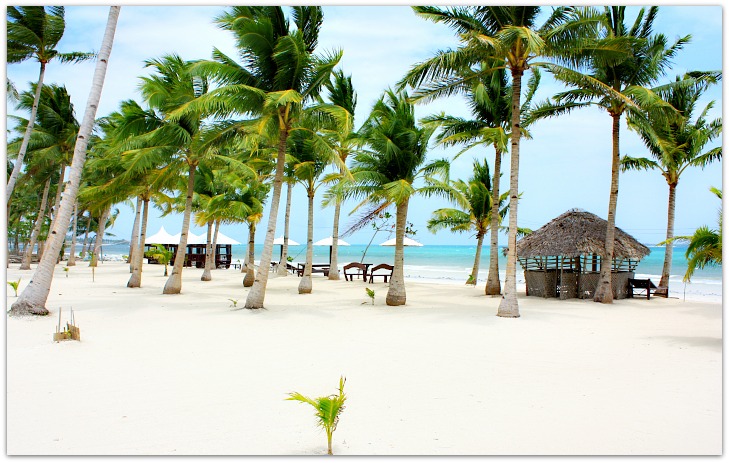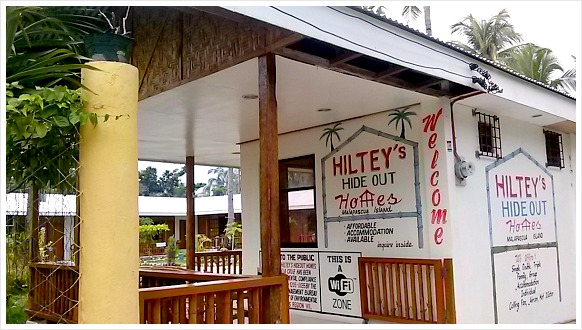"Reminiscing Cebu History"
A Story of Courage & Freedom
Cebu History
 Cebu City train station. Photo: Cebuano Studies Center, San Carlos University Library
Cebu City train station. Photo: Cebuano Studies Center, San Carlos University LibraryA Glimpse of Cebu History
Cebu, a province steeped in history, offers a fascinating narrative that spans several centuries, beginning long before the arrival of European colonizers, through the Period of Spanish Occupation, and into the modern era. This rich history is a tapestry of cultural exchanges, political upheavals, and economic transformations.
|
Under the Spanish crown, the Portuguese explorer Ferdinand Magellan landed in Cebu on April 7, 1521. Rajah Humabon, the king of Cebu, welcomed the explorer with his wife and hundreds of native islanders, who were then baptized into Catholicism a week later. The Spaniards and their explorers had traveled and conquered continents and unnamed places taking the Galleon Ships as their vehicle to transport all sorts of goods, such as spices, gold, food, among others. As the new arrivals tried to expand to the neigboring island of Mactan, Magellan perished with some of his soldiers during the "Battle of Mactan". The remaining members of his expedition left Cebu while some
died for being poisoned. However, more Spanish friars were sent to Cebu and have established churches in various parts of the province most of them are still standing even today. |
 Galleon Ship Galleon Ship |
Brief Summary of Cebu's History
Before the Arrival of the Spaniards
Before 1521, Cebu was known as Sugbu and was part of a more extensive network of island polities in the region. These early societies had their systems of governance, trade, and social customs. Ruled by local chieftains known as 'Datus,' these communities engaged in trade with neighboring islands and distant lands, including China and other parts of Southeast Asia. The people of Cebu had their own indigenous beliefs, practices, and a rich oral tradition. This Period was marked by relative independence and the flourishing of local cultures.
Spanish Occupation (1521-1898)
The arrival of Ferdinand Magellan in 1521 marked the beginning of a new era. The Spanish expedition introduced Christianity, significantly altering the religious landscape. The Battle of Mactan, where local hero Lapu-Lapu defeated Magellan, symbolizes Filipino resistance. Following Magellan, Miguel López de Legazpi established the first Spanish settlement, heralding over three centuries of colonial rule. This Period saw Cebu become a pivotal center of Christianization and a vital part of the Galleon Trade. The Spanish era left indelible marks on Cebu's cultural, religious, and architectural landscape, juxtaposed with continuous resistance and efforts toward autonomy by the Cebuanos.
Post-Spanish Era to the Present
The late 19th century was a time of upheaval and change, with Cebu playing a significant role in the Philippine Revolution. The subsequent American Occupation brought about modernization and educational reforms. World War II and the Japanese Occupation were times of hardship and resistance, leading to significant post-war reconstruction. Since gaining independence in 1946, Cebu has emerged as a hub of commerce, industry, and tourism. Today, it balances modern advancements with its rich historical and cultural heritage, illustrating the resilience and adaptability of its people.
Cebu Province, located in the central Visayas region of the Philippines, has a rich and diverse history since the arrival of the Spaniards in 1521. Here's a summary of significant historical events that shaped Cebu's history:
Arrival of Ferdinand Magellan (1521)
This event marks the beginning of Spanish influence in the Philippines. Ferdinand Magellan, a Portuguese explorer leading a Spanish expedition, landed on Cebu Island. He introduced Christianity and converted Rajah Humabon, his wife, Queen Juana, and several chieftains.
Battle of Mactan (1521)
The Battle of Mactan was a significant event shortly after Magellan's arrival. Lapu-Lapu, a local chieftain, resisted Spanish colonization and defeated Magellan. This resistance is celebrated in Cebu's history, symbolizing early Filipino defiance against foreign domination.
Spanish Colonization (1565 Onwards)
Miguel López de Legazpi, another Spanish explorer, arrived in Cebu and established the first Spanish settlement in the Philippines. This marked the start of over three centuries of Spanish rule. Cebu became a significant base for the Spanish colonizers.
Spread of Christianity
With Spanish colonization came the spread of Christianity, and Cebu became the cradle of Christianization in the Philippines. The Basilica Minore del Santo Niño, which houses the oldest religious relic in the Philippines, the Santo Niño de Cebu, was established during this Period.
Cebu During the Galleon Trade (1565-1815)
Cebu played a vital role in the Manila-Acapulco Galleon Trade. Its strategic location made it a regular port for Galleon ships traveling between Mexico and the Philippines, bringing significant economic benefits.
British Occupation (1762-1764)
The British briefly occupied Cebu during the Seven Years' War. However, Spanish rule was restored after a couple of years.
19th Century Reforms and Nationalism
The 19th century saw the rise of Filipino nationalism. Cebu was not immune to these changes, with local figures like Leon Kilat playing prominent roles in uprisings against Spanish rule.
Philippine Revolution and Spanish-American War (Late 19th Century)
Like other parts of the Philippines, Cebu was involved in the Philippine Revolution against Spain. The subsequent Spanish-American War impacted it.
American Period (1898-1946)
After Spain's defeat in the Spanish-American War, Cebu came under American rule. This Period saw economic and educational development, as well as changes in governance.
World War II and Japanese Occupation (1942-1945)
Cebu was occupied by Japanese forces during World War II, leading to significant hardships and resistance movements.
Post-War Reconstruction and Independence (1946 Onwards)
After the war, Cebu experienced reconstruction and eventually benefited from the Philippines' independence from the United States in 1946. Post-independence, Cebu continued to grow economically and politically, becoming one of the most developed provinces in the Philippines.
Modern Era
Today, Cebu is known for its economic, cultural, and historical significance. It has become a center of the Visayas region's industry, commerce, trade, and education.
Throughout these periods, Cebu witnessed various social, political, and economic transformations, reflecting the broader changes occurring in the Philippines. Its history blends indigenous heritage, Spanish colonial influence, American modernization, and its unique regional characteristics.
 "The Battle of Mactan Island"
"The Battle of Mactan Island"Villa de San Miguel
However, after the expedition has visited Mazaua, Leyte, and Bohol they returned to Cebu on April 15, 1565. On their arrival, realizing that the town had been abandoned, the conquistadors then seized the island.
The local king, Rajah Tupas, presented later on to the Spaniards on May 8 leading to the establishment of the "Treaty of Cebu" on July 3, 1565 and named the new colony "Villa de San Miguel", which was later renamed into "Villa del Santisimo Nombre de Jesus".
Reinforcements of 2,100 Spaniards and Mexicans arrived in Cebu in 1567. This new colony has grown and fortification was built called the Fuerza de San Pedro or the popularly known "Fort San Pedro" - now a museum with a garden.
 The old wooden Fort San Pedro
The old wooden Fort San PedroHaving a fortified walls and soldiers, Cebu had become a Spanish
settlement as a safe port for ships from Mexico and as a point of
departure for colonial expansion of the newly-discovered archipelago.
The expansion of Spanish colony to Luzon led to the defeat of the Rajahs there. About a year later, Lopez de Legazpi in Cebu made a pact with the defeated Rajahs leading to the construction of the walled city - Intramuros.
 Fort San Pedro, Cebu City
Fort San Pedro, Cebu CityCebu Diocese & Local Revolts
Pope Clement VIII was the one responsible for the creation of Cebu
diocese, on August 14, 1595, as a suffragan to the Archdiocese of
Manila.
Leon Kilat, on April 3, 1898, led a revolution against
the Spanish authorities on the island and successfully took control of
the urban center.
The success did not last long when Leon Kilat was murdered and the Spanish soldiers' arrival from Iloilo.
Treaty of Paris & Liberation
After the Spanish-American War, the Treaty of Paris was signed ceding Cebu and the rest of the Philippines to the United States.
When the US troops landed in Cebu, they were not met with resistance as Cebuanos surrendered. However, General Arcadio Maxilom, Juan Climaco among others, resisted the new colonists' presence until 1901.
 The Treaty of Paris ceded the Philippines to the United States
The Treaty of Paris ceded the Philippines to the United StatesOnly during the Commonwealth Era (1935-1946) that Cebu became a chartered city on February 24, 1937. Cebu was just a town since its foundation in 1565.
When the Japanese invaded the country during the Second World War, they encountered resistance from local patriots led by Colonel James Cushing and the Cebu Area Command. Its liberation finally came on March 1945.
Yes, that is the shortest version of Cebu's history. For further details, you may scan any book available in you locale, or in Cebu when you get there!
- Home
- Cebu Story
Book Your Activity Here...
Please Like, Share...
Leave Messages...
|
|
Book & confirm your hotel room quickly and safely with Agoda Company. Agoda uses a state-of-the-art technology when processing your transaction online. Traveling Cebu is Agoda's official partner for eight years now. Find now your hotel here or below.






